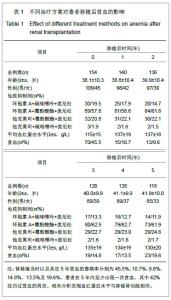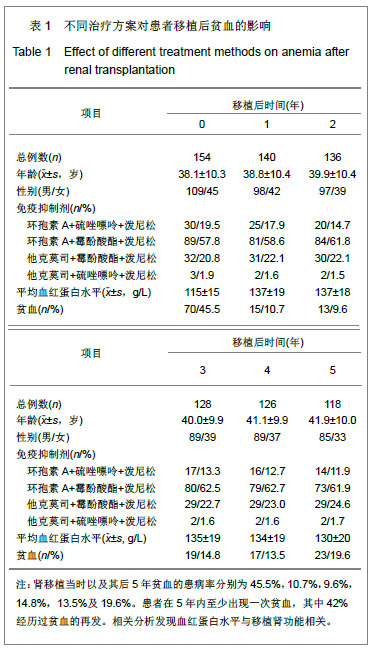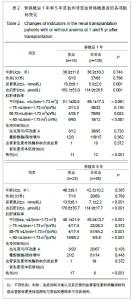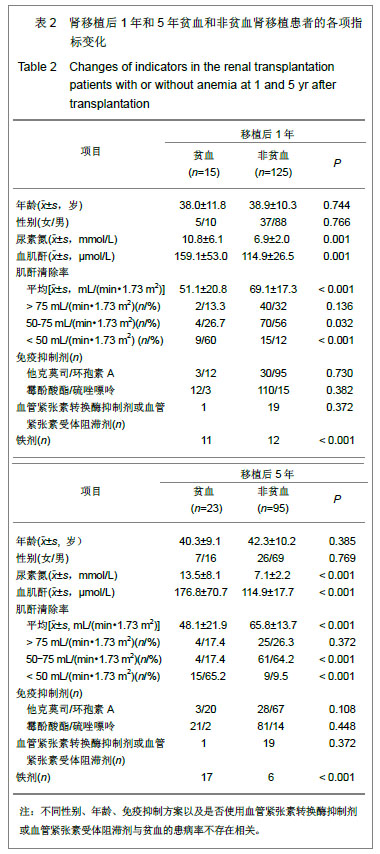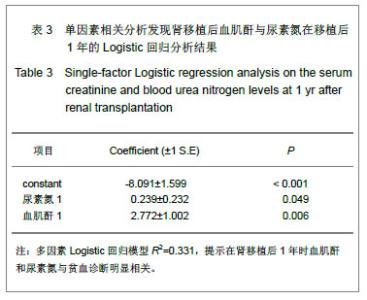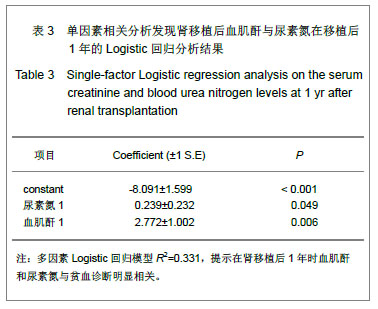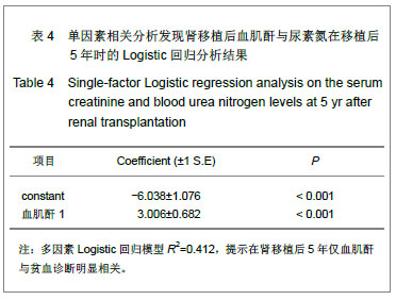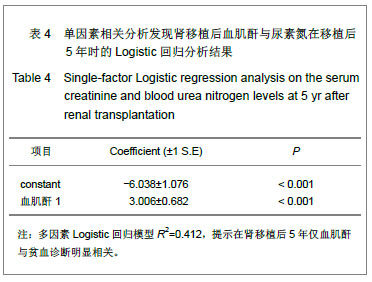| [1] |
Xuan Juanjuan, Bai Hongtai, Zhang Jixiang, Wang Yaoquan, Chen Guoyong, Wei Sidong.
Role of regulatory T cell subsets in liver transplantation and progress in clinical application
[J]. Chinese Journal of Tissue Engineering Research, 2022, 26(7): 1143-1148.
|
| [2] |
Yang Zhiwei, Liu Junchang, Gao Xiaolin, Jiang Taimao.
Relationship between tacrolimus metabolic rate and early BK virus infection after kidney transplantation
[J]. Chinese Journal of Tissue Engineering Research, 2022, 26(5): 712-716.
|
| [3] |
Yang Xin, Jin Zhe, Feng Xu, Lu Bing.
The current situation of knowledge and attitudes towards organ, eye tissue, body donation of residents in Shenyang
[J]. Chinese Journal of Tissue Engineering Research, 2021, 25(5): 779-784.
|
| [4] |
Wang Xiaobo, Wang Changan, Han Jianle, Yang Qingyan, Yang Shuaiping, Yang Junwei.
Influence of conversion from cyclosporine to tacrolimus on glucose metabolism and cardiovascular risk profiles in stable kidney transplant patients
[J]. Chinese Journal of Tissue Engineering Research, 2021, 25(14): 2236-2240.
|
| [5] |
Wei Zhongling, Jiang Yizhi, Huang Laiquan, Yan Jiawei, Yu Zhengzhi, Wang Nana, Huang Chen, Wang Ran, Huang Dongping.
Severe aplastic anemia treated with unrelated cord blood combined with matched sibling allogeneic hematopoietic stem cell transplantation
[J]. Chinese Journal of Tissue Engineering Research, 2021, 25(13): 2049-2054.
|
| [6] |
Liu Junchang, Gao Xiaolin, Jiang Taimao.
Correlation of CY3A5 genetic polymorphism with concentration/dosage of tacrolimus and individualized administration of tacrolimus after kidney transplantation
[J]. Chinese Journal of Tissue Engineering Research, 2021, 25(11): 1740-1744.
|
| [7] |
Liu Yu, Zhang Nanxin, Dai Liqun, Ying Wei.
Meta-analysis of the effectiveness of cold therapy after
total knee arthroplasty
[J]. Chinese Journal of Tissue Engineering Research, 2020, 24(9): 1443-1448.
|
| [8] |
Guo Juan, Zheng Shan, Xie Hui, Hu Yahui.
An analysis of pathogenic bacteria infection in 422 kidney transplant recipients
[J]. Chinese Journal of Tissue Engineering Research, 2020, 24(32): 5198-5202.
|
| [9] |
Zhang Suping, Sun Ling, Wan Dingming, Cao Weijie, Li Li, Liu Changfeng, Liu Yufeng, Wang Dao, Guo Rong, Jiang Zhongxing, Xie Xinsheng.
Effectiveness of unrelated peripheral blood stem cell transplantation in the treatment of severe aplastic anemia
[J]. Chinese Journal of Tissue Engineering Research, 2020, 24(31): 4994-5001.
|
| [10] |
Liu Luhao, Fang Jiali, Zhang Lei, Li Guanghui, Xu Lu, Lai Xingqiang, Xiong Yunyi, Chen Rongxin, Ma Junjie, Chen Zheng.
Clinical assessment criteria of donor pancreas transplants for simultaneous pancreas-kidney transplantation
[J]. Chinese Journal of Tissue Engineering Research, 2020, 24(26): 4157-4161.
|
| [11] |
Ding Yubin, Tang Yufeng, Tang Xudong.
Application and research advances in stem cell
transplantation for severe aplastic anemia
[J]. Chinese Journal of Tissue Engineering Research, 2020, 24(19): 3084-3092.
|
| [12] |
Wei Yuanfeng, Huang Dongping.
Current status of hematopoietic stem cell transplantation in
the treatment of aplastic anemia
[J]. Chinese Journal of Tissue Engineering Research, 2020, 24(19): 3093-3100.
|
| [13] |
Zhong Ping, Cui Xing.
Mechanism of angelica polysaccharide regulating mitochondrial
apoptosis for improving bone marrow failure
[J]. Chinese Journal of Tissue Engineering Research, 2020, 24(13): 2074-2079.
|
| [14] |
Chen Xiaoling, Deng Huilan, Lu Quanyi, Hong Xiuli, Hu Jiasheng.
Pure red cell aplasia follows allogeneic hematopoietic stem cell transplantation: a two-case report and literature review
[J]. Chinese Journal of Tissue Engineering Research, 2019, 23(5): 761-766.
|
| [15] |
Guo Zhi, Ren Hua, Ji Yong, Chen Liping, Chen Lina, Liu Xuanyong, Zheng Shanshan, Liu Xiaodong, Chen Huiren.
Thrombopoietin improves platelet recovery after allogeneic hematopoietic stem cell transplantation for severe aplastic anemia: an assessment of safety and efficacy
[J]. Chinese Journal of Tissue Engineering Research, 2019, 23(33): 5269-5274.
|
